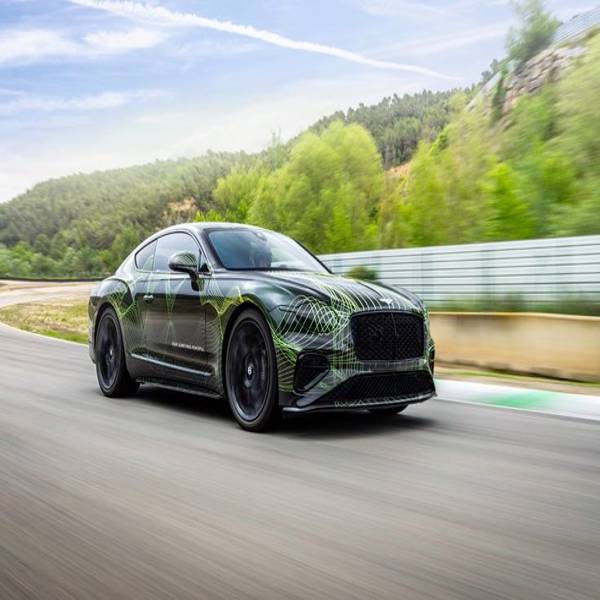Bentley Continental GT: Electrified Power Meets Grand Touring Luxury
Bentley’s sales in 1998 were a mere 414 vehicles. That same year, Volkswagen acquired the struggling British automaker and began its turnaround. The Continental GT, launched under Volkswagen’s ownership in 2002, proved to be a game-changer. Pre-orders surged past 3,000, and Bentley sold a whopping 7,000 units in the car’s first year of production.
Bentley is eager to showcase the latest iteration of their iconic Continental GT. Built on the familiar VW MSB platform, this update marks a significant departure from tradition.
For the first time, the Continental GT ditches its legendary W12 engine and embraces electrification. That’s right, the car that debuted with the W12 in 2002 now gets a hybrid powertrain based on the existing 4.0-liter V8.
Given the groundbreaking changes under the hood, it’s no surprise Bentley is anxious for us to experience the new Continental GT. We were fortunate to get behind the wheel of camouflaged prototypes for an early impression. While officially labeled prototypes, these cars are close to final production, ensuring our driving experience will be relevant to the finished product arriving later this year.
While we were able to glimpse uncamouflaged versions, details about the car’s exterior and interior design remain under wraps for now. Let your imagination run wild regarding the look beneath the disguise!
The test drive took place at Parcmotor Castelloli, a short and hilly racetrack near Barcelona, ideal for simulating performance on the car’s intended twisty mountain roads. Unfortunately, with only two allotted hot laps and European weather conspiring against us, the track was drenched and frigid upon arrival. This presented a unique challenge: evaluating a powerful car on an unfamiliar, wet surface.
Despite the Continental GT’s hefty weight exceeding two tons, I pushed it to its limits. The wet track undeniably amplified the car’s weight, making it feel less sure-footed compared to my previous experience with the Maserati GT Folgore on a similar wet track in Italy.
One particular corner exposed the car’s immense power. Focused on navigating the unfamiliar track and managing the GT’s impressive acceleration, I misjudged the speed and entered the corner too hot. The Continental GT is undeniably fast, boasting a 0-100 kph time of 3.2 seconds, surpassing even the W12 model. This urgency extends beyond initial acceleration; mid-range speed increases are equally exhilarating. In this instance, the rapid 150-200 kph jump caught me off guard, leading to the near miss. Fortunately, the car’s brakes proved exceptional. The massive 420mm front and 380mm rear discs, likely still the largest cast iron setup on a production car, delivered confident and immediate stopping power.
While the Parcmotor track lacked the extended straights of an F1 circuit, I managed to reach an impressive 211 kph on the speedometer, and acceleration remained strong. Though official figures are yet to be released, Bentley claims the Speed variant boasts superior roll-on acceleration compared to the W12 model.
The key to this performance lies in the combined output of the hybrid twin-turbo V8 and the integrated electric motor. This powertrain delivers a phenomenal 782 horsepower and 1,000 Nm of torque, eclipsing the W12’s 659 horsepower and 900 Nm. Beyond peak figures, the new hybrid offers superior power and torque curves across the entire RPM range. Notably, the power delivery extends to 6,000 rpm, surpassing the W12’s limit of 5,000 rpm.
Also read : Porsche introduced a hybrid version of their iconic 911 Carrera GTS.
Bentley is clearly betting on the new powertrain to propel the Continental GT’s success. The absence of the W12 engine may sacrifice a touch of prestige, but it’s countered by a significant performance boost. Additionally, the hybrid system caters to a new generation of drivers seeking a balance between power and environmental responsibility. This translates to a compelling proposition: exhilarating performance alongside reduced emissions.



